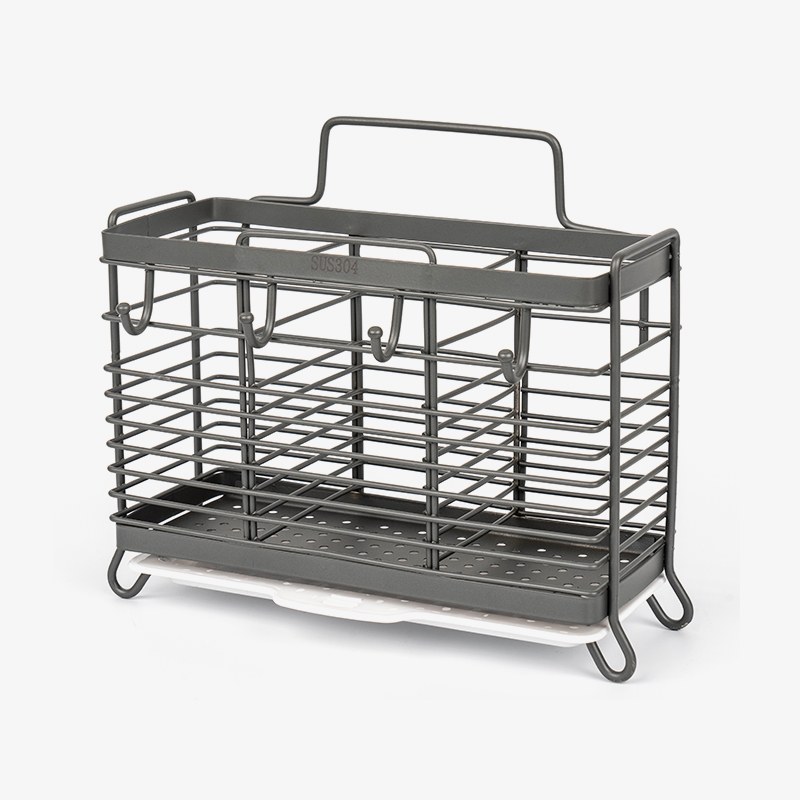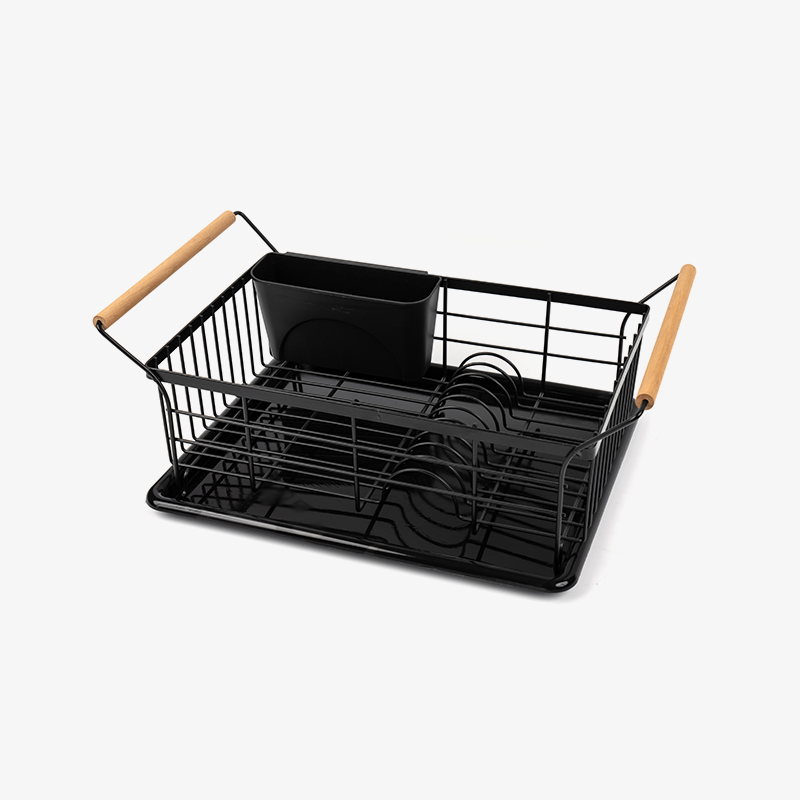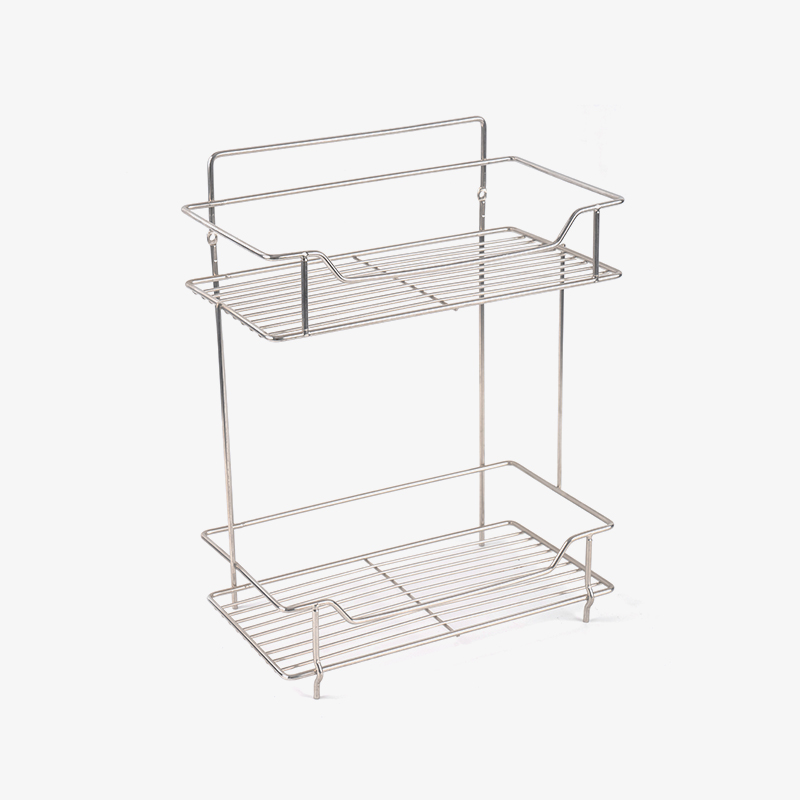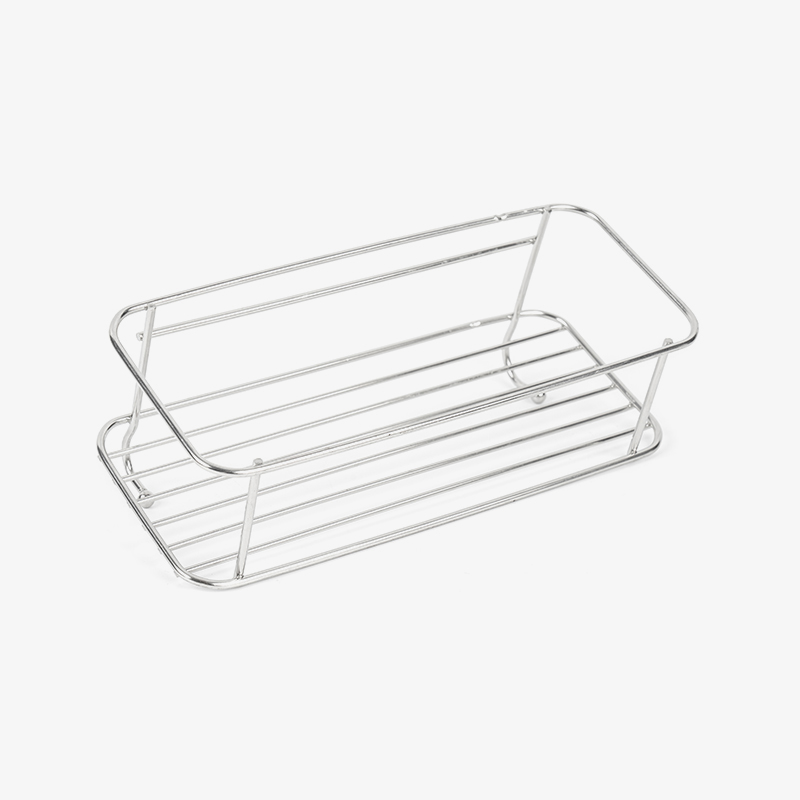The kitchen, a space where water, oil, and cleaning chemicals converge, often faces the dilemma of damp tableware breeding bacteria. Acid and alkali resistant drain racks, designed for the harsh kitchen environment, solve this problem through thoughtful engineering. They not only withstand corrosion from vinegar, detergents, and other substances but also maintain tableware dryness and hygiene. Let’s explore the science behind their functionality.
Content
- 1 What structural designs accelerate water drainage for tableware?
- 2 How do acid and alkali resistant materials prevent contamination?
- 3 What zoned designs reduce cross-contamination?
- 4 How do anti-slip and easy-to-maintain features boost hygiene?
- 5 Why is acid and alkali resistance essential for long-term hygiene?
What structural designs accelerate water drainage for tableware?
Efficient water removal is the first line of defense against dampness, and structural design is key to this process.
Tilted tilted diversion structures are a game-changer. Many racks adopt a 30° incline paired with honeycomb-shaped drainage holes, which speeds up water flow by 3 times compared to flat designs. This means water on dishes and utensils drains off quickly, reducing the time they stay moist. For smaller items like sponges and dishcloths, racks often include dedicated tilted trays that channel water directly into the sink, preventing drips on the countertop.
Precision spacing between drain bars also matters. Racks typically set gaps of 1.1cm between smaller bars and 3cm between larger ones. This balance ensures stability—even heavy pots and lids won’t slip—while leaving enough room for water to pass through freely. Some models add side and bottom drainage holes in storage baskets, ensuring water doesn’t pool inside even for small items like scrub brushes.
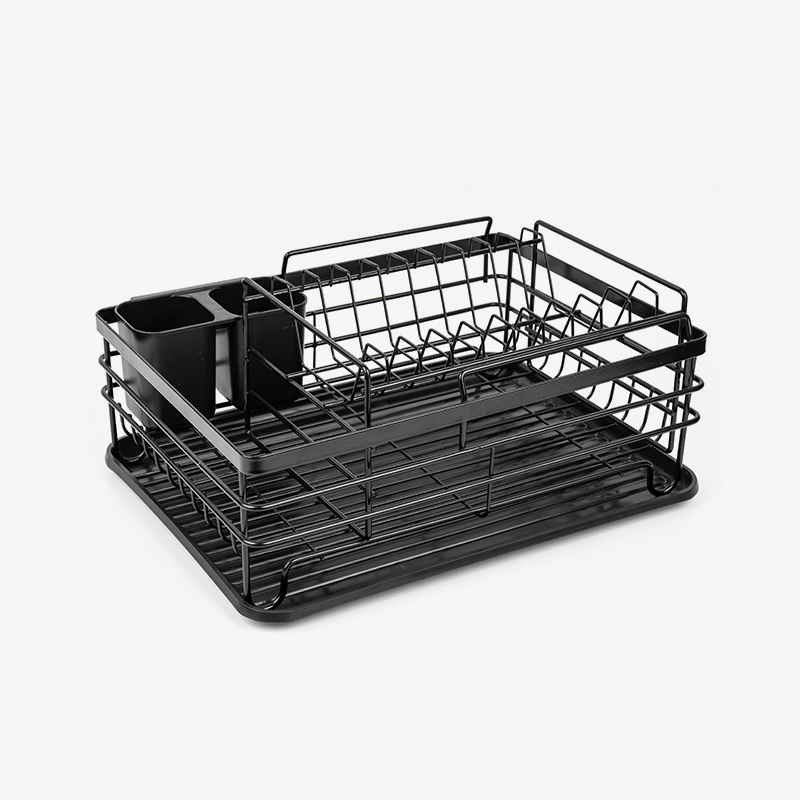
How do acid and alkali resistant materials prevent contamination?
The materials of these racks directly impact both durability and hygiene, especially in contact with kitchen chemicals.
Food-grade stainless steel is a common choice. Its smooth surface resists oil and grease buildup, and it won’t rust or corrode when exposed to acidic vinegar or alkaline detergents. For enhanced protection, some racks feature a stainless steel core wrapped in food-grade silicone. This dual-layer design adds slip resistance, prevents scratches on tableware, and further blocks chemical erosion.
Innovative materials like diatomaceous earth are also emerging. Diatomaceous earth panels absorb water instantly—turning wet dishes dry in minutes—and their porous structure regulates humidity to avoid mold growth. Unlike plastic, these materials contain no harmful additives and are safe for direct contact with tableware. All these materials are easy to clean: a quick rinse with water removes residue, eliminating hidden spots for bacteria.
What zoned designs reduce cross-contamination?
Smart zoning keeps different kitchen tools separated, lowering the risk of bacterial spread.
Many racks include dedicated sections: one for large items like plates and bowls, another for small utensils like forks and spoons, and a third for cleaning tools like sponges and steel wool. This separation prevents food particles from mixing—for example, grease from pots won’t transfer to salad bowls. Some models even have detachable baskets that can be customized for different item sizes, ensuring each piece has its own space.
For added hygiene, some racks integrate raised edges or drip trays. The raised edges contain spills, while drip trays collect excess water that can be emptied daily. This design keeps both the rack and the countertop dry, avoiding the "wet zone" where bacteria thrive.
How do anti-slip and easy-to-maintain features boost hygiene?
Stability and maintainability are often overlooked but critical for long-term hygiene.
Anti-slip elements prevent accidents and contamination. Many racks have silicone bumps on the bottom that grip the countertop, even when wet. This stops the rack from sliding and spilling water or knocking over clean dishes. Smooth, polished edges also matter—they prevent scratches on hands and tableware, and eliminate crevices where food can get trapped.
Easy maintenance ensures the rack itself stays clean. Materials like stainless steel and silicone resist staining and are dishwasher-safe. Even detachable components can be taken apart for deep cleaning, ensuring no food residue or mold hides in hard-to-reach places. Unlike porous plastic racks that absorb odors over time, these materials stay odor-free, keeping the kitchen fresh.
Why is acid and alkali resistance essential for long-term hygiene?
Corrosion resistance isn’t just about durability—it directly affects hygiene over time.
Kitchens are full of corrosive substances: vinegar from salads, lemon juice from marinades, and alkaline dish soaps. Ordinary racks may rust or degrade when exposed to these, creating rough surfaces where bacteria cling. Acid and alkali resistant materials, however, remain smooth and intact, preventing bacterial colonization.
A rust-free, undamaged rack also avoids contaminating tableware. Rust flakes or degraded plastic particles can’t mix with food, ensuring every dish is safe to use. This long-term stability means the rack maintains its hygienic properties for years, making it a reliable investment for the kitchen.
In the kitchen, dryness equals hygiene—and acid and alkali resistant drain racks master this with design, materials, and functionality. By accelerating drainage, preventing contamination, and being easy to maintain, they turn a simple storage tool into a guardian of kitchen health. For anyone looking to keep their tableware safe and their kitchen clean, these racks are an essential choice.



 Español
Español عربى
عربى